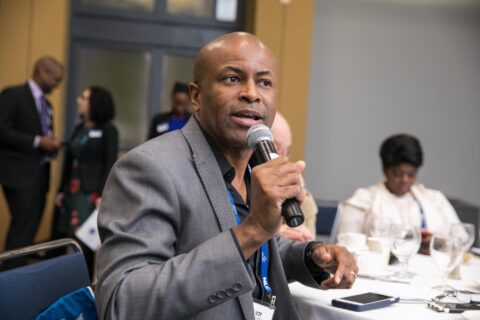A city’s budget is often described as a reflection of the municipality’s priorities. Cities across the country have responded to the inequities present in their communities by establishing budget equity tools. A budget equity tool is a process by which city departments intentionally integrate considerations of racial and economic equity into the budget development process. Incorporating these considerations ensures intentional scrutiny of how budget decisions impact different populations.
Vulnerable Residents
Budget equity tools help to shift the perception of the budgeting process away from simply being a list of expenditures and instead encourage municipal staff and leadership to consider which areas will have the greatest outcomes for the city’s most vulnerable residents. Vulnerable residents are individuals or groups who experience heightened social, economic or health-related challenges due to systemic barriers, historical inequities or limited access to resources and opportunities. This includes people of all racial and ethnic backgrounds, such as low-income populations, seniors, people with disabilities, rural residents and others disproportionately impacted by government policies and decisions.
Budget equity tools can take many different forms depending on the needs of the city and the existing budgeting process. In some instances, each city department responds to a set of in-depth questions detailing how they have applied an equity lens to their budget request which is submitted alongside the request to City Council. Ideally, a summary of the departments’ responses is available on the Council’s website along with an explanation of the methodology so that the public can understand how each department invests in equity. One city had great success with this format, with more than 90 percent of more than 50 departments completing a response in its first year.
Another approach is one in which not every department is required to utilize the budget equity tool. Instead, the managing department creates a criteria checklist that departments complete to determine whether their budget request needs to go through the budget equity tool process. Selected departments then complete a questionnaire assessing who benefits or is burdened by the request, how funding addresses disparities and whether there is meaningful community engagement and accountability. An evaluation team recruited by the managing department reviews the budget requests and scores them to reflect how well a department has thought about equity related to their budget request (not whether a request is inherently equitable).
Challenges
Certainly, there are challenges to instituting a budget equity tool. City departments may find it difficult to apply the tool effectively, leading to lower-quality submissions and reduced participation. Similarly, crafting a budget equity tool that works for all city departments that address different needs and audiences presents a dilemma. Many staff members see equity as an added burden or something that only benefits communities of color, rather than recognizing it as a tool that strengthens entire cities. When equity is centered in the budgeting process, resources are allocated more effectively, leading to better community outcomes, cost savings through prevention and long-term improvements that benefit everyone. A budget equity tool isn’t just another requirement — it’s a strategy for creating stronger, more sustainable communities. Having a continual feedback loop to train staff on utilizing the tool and then learn from users how the process can be improved is one way to combat these issues.
For municipalities considering a budget equity tool, cities should define a clear purpose and set expectations, recognizing it as both a mechanism for equitable decision-making and, in some cases, a solution to address specific issues such as unequal resource distribution, bias in budgeting, and disparities in public services. Further, cities must identify the partnerships necessary to make the tool an essential consideration for participating departments. Cities also need leadership buy-in: When the budget equity tool is seen by departments as a standard part of the budget process, they will put more time and thoughtfulness into their responses. The tool should be integrated seamlessly into existing processes rather than being seen as an additional or standalone task. Finally, cities should consider ways to codify their tool to ensure that they can, successfully and without disruption, contribute to long-term equity goals.
Equity is Not An Afterthought
Budget equity tools are meant to push city departments to think about how to integrate equity into their own budget development and execution, rather than thinking of equity as an afterthought. This increases organizational understanding of inequities, why and where they exist, and how they can be addressed through budgeting decisions. In this way, budget equity tools can have a domino effect. Beyond the budgeting process, city departments can reevaluate the distribution of resources and the ability to do it more equitably by prioritizing the needs of vulnerable communities. Operationalizing this process enables municipalities to take more deliberate steps toward advancing equitable outcomes for all residents.
Dig Deeper
NLC’s Municipal Strategies to Narrow the Racial Wealth Divide guide helps local leaders gain a greater understanding of how to approach and design impactful strategies to reduce the racial wealth divide.








